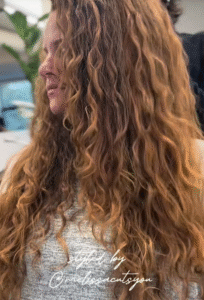Curly hair has always been striking. It carries volume, texture, and personality that make it stand out in any room. Yet for so long, people with curls were made to believe that their natural hair was a problem. From childhood classrooms to corporate offices, comments about “messy hair” or “professional appearance” pushed many into years of straightening, relaxing, and hiding their natural spirals. What began as an attempt to fit in often resulted in damaged strands, painful scalp issues, and, perhaps most significantly, a loss of confidence in one’s natural beauty.
The shift toward embracing curls has been nothing short of transformative. Across cultures, generations, and communities, people are learning to see curly hair for what it truly is: bold, unique, and beautiful. What was once seen as difficult or unruly is now celebrated as a crown of identity and individuality. This movement has changed routines, attitudes, and lives.
At the heart of the transformation is the understanding that curly hair needs different care than straight hair. Its natural bends and twists make it harder for oils from the scalp to travel down the strands, which leads to dryness and breakage. For decades, this was ignored, and harsh shampoos stripped away what little moisture curls retained. Today, people are choosing sulfate-free cleansers, hydrating conditioners, and weekly deep treatments to give their spirals the nourishment they need. Natural oils like argan, coconut, and jojoba are used to seal in moisture, turning frizz into shine and weakness into resilience.
Styling has also taken on a new meaning. Instead of working against curls, people are learning to work with them. Methods like finger-coiling, twist-outs, and plopping allow natural curl patterns to flourish. Diffusing on low heat protects delicate strands while creating bounce and volume. Lightweight creams, mousses, and gels offer definition without stiffness, leaving curls soft, touchable, and full of life. Even protective styles such as braids, buns, or twists give curls a rest while offering stylish options for everyday life.
Beyond the practical routines, the curly hair movement has reshaped culture itself. Social media has played a huge role, creating communities where people share tips, tutorials, and personal stories. Transformation photos flood timelines, not just showcasing new looks but celebrating confidence regained. Representation has expanded too. Celebrities, athletes, and models are proudly wearing their curls in films, on magazine covers, and at major events. This visibility reinforces the truth that curly hair is not only acceptable but extraordinary.
The emotional impact of this shift has been profound. For many, embracing curls has meant letting go of years of insecurity. It has meant rejecting beauty standards that demanded uniformity and choosing instead to love what makes them unique. Parents who once straightened their children’s hair are now teaching them to care for and cherish their curls. Generations are breaking cycles of shame and creating legacies of pride and authenticity.
Ultimately, the curly hair transformation is not about trends or products—it is about freedom. Every curl carries a story of resilience and individuality. Wearing them proudly is an act of self-love and a message to the world: beauty comes in many shapes, and authenticity is the most powerful style of all.
When curls are nourished, cared for, and embraced, they become more than hair. They become radiant crowns—symbols of strength, beauty, and identity that inspire people everywhere to love themselves without apology.


